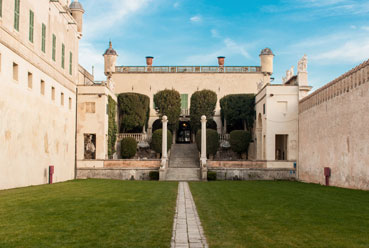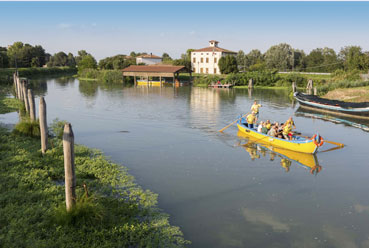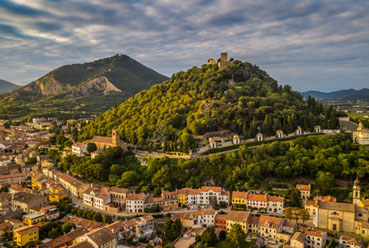The town of Abano Terme is located in a strategic position in the Po valley. Abano Terme is at the foot of the Euganean Hills whose volcanic origin gave us thermal water springs known and appreciated since Roman times. It is 20 minutes from Padua by car and less than an hour and a half from Venice by train. Finally, it is surrounded by a land whose exploration can show different purposes: naturalistic, historical and archaeological, literary and even religious.
The way of Saint Anthony of Padua

Saint Anthony’s Basilica – Padua
From Saint Anthony’s Basilica, set up in 1310, where the saint’s relics are kept, it is possible to leave, complete with a pilgrim’s passport issued in the Sanctuary, for the Way of Saint Anthony’s first destination. The 22.3 km long walking route will lead you to the town of Monselice, famous for its fortress and its donjon (a large inner tower inside a medieval castle) commissioned by Emperor Frederick II of Swabia.
After leaving Padua, you will walk along the bank of the ancient watercourse of the Battaglia Canal, dug in the Middle Ages by the Paduans for trading purposes, and you will immerse yourself in a rural landscape dotted with enchanting Venetian Villas (i.e. Villa Molin, Villa Selvatico Sartori, Villa Emo Rivella) and dominated by the mighty Castello del Catajo, which you will come to meet after a 14 km walk at the foot of the Mount Ceva in Battaglia Terme. The presence of such important buildings is due precisely to water which was an essential resource for moving around, for producing energy, for defending and for trading with the outside world.

Castello del Catajo – Battaglia Terme

Canale Battaglia – Battaglia Terme
Right in the characteristic river village of Battaglia Terme, you can visit the Museum of the River Navigation and its artifacts that are exhibited in plain sight in the center of the village. Here one of the first Italian paper mills was set up in the 14th century, thanks to the power of water, and, from here, the Vigenzone Canal led up to the Venice Lagoon.
The Way of St. Anthony also runs parallel with the history of Euganean Spa: from the boiling waters of the Costa d’ Arquà lake, listed by UNESCO as one of the most important prehistoric pile dwelling sites as well as an important natural reservoir for the famous natural and healing mud of the Terme Euganee, to the Grotta di Sant’Elena [Saint Elena’s Grotto] which rises next to the spectacular Villa Selvatico Sartori, the destination of princes and emperors, and the National Fascist Institute of Social Security, a legacy of the old spa buildings.
Indeed, the Paduan Way of Sant’Antonio never loses sight of the great resource of the subsoil and its management: thermalism. Skirting the Euganean thermal area of Abano, Montegrotto, Galzignano Terme, this trail is also a naturalistic, and geological experience that also includes health and knowledge.

Rocca – Monselice
Once in Monselice, the last southern offshoot of the Euganean Hills, you can take the Via Sacra (“romanis basilicis pares”) also called the Salita delle Sette Chiesette [The Ascent of the Seven Churches] and enjoy the charm of the ancient mons silicis (which means mount of the flint) and its fortification built by the imperial vicar Ezzelino da Romano.
In perfect “Slow tourism” style and slow travelling, after a half day outdoors, you can return to Abano Terme with a quick train ride and then take a dip in our swimming pool or relax your muscles with the help of our expert masseurs.
Type of experience: walking
Duration: 4/5 hours
Length: 22 Km
Transfers: by train from Abano to Padua and from Monselice to Abano
For whom:
– for trained walkers, although the route is flat, the whole trail is 22 km long
– for everyone, if you choose shorter sections
Lorella – Experience Team

Hotel Terme Abano Verdi
Via F. Busonera 200
35031 Abano Terme (PD) Italy
Tel: +39 049 66 76 00
Fax: +39 049 66 70 25
E-mail: info@hotelabanoverdi.com
Hotel Terme Verdi srl – P.I. 00350790283 – Powered by GeCHo










